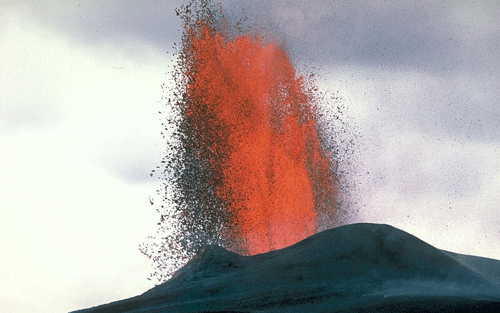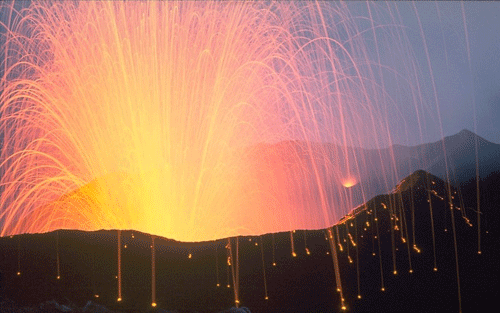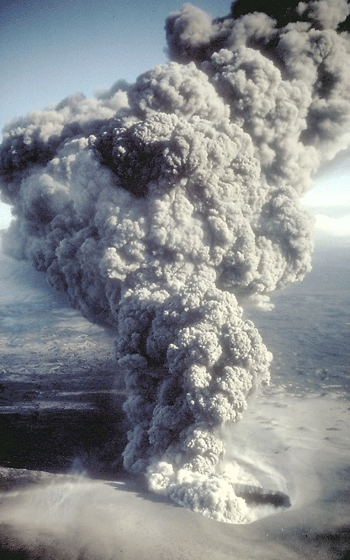Basaltic liquids are characterized by low viscosities and relatively low volatile contents, such that basaltic eruptions tend to be more effusive than explosions. However, this doesn’t mean that basaltic lavas always flow quietly from the Earth. Explosive basaltic eruptions and fire fountains can send volcanic tephra tens to hundreds of meters into the air – sometimes more than a kilometer! The table below explains the eruptive styles observed at Lakagígar; it is by no means exhaustive.

Hawaiian: Hawaiian-style eruptions are characterized by continuous fountains of lava that can go on for hours or days. Such fire fountains typically form scoria or spatter cones (Pu’u O’o is a classic example).
Credit: J.D. Griggs, U.S. Geological Survey

Strombolian: The defining characteristic of a strombolian eruption is that it is not continuous – short bursts of volcanic activity throw tephra tens to hundreds of meters into the air. The tephra falls back to the Earth along a parabolic trajectory that is sensitive to wind direction.
Credit: B. Chouet, U.S. Geological Survey

Phreatomagmatic: In a phreatomagmatic eruption, magma interacts with groundwater at shallow depths beneath the surface. The violent interaction between the hot magma and cold water causes steam explosions that fragment the lava and overlying solid rock layers.
Credit: D. Swanson, U.S. Geological Survey